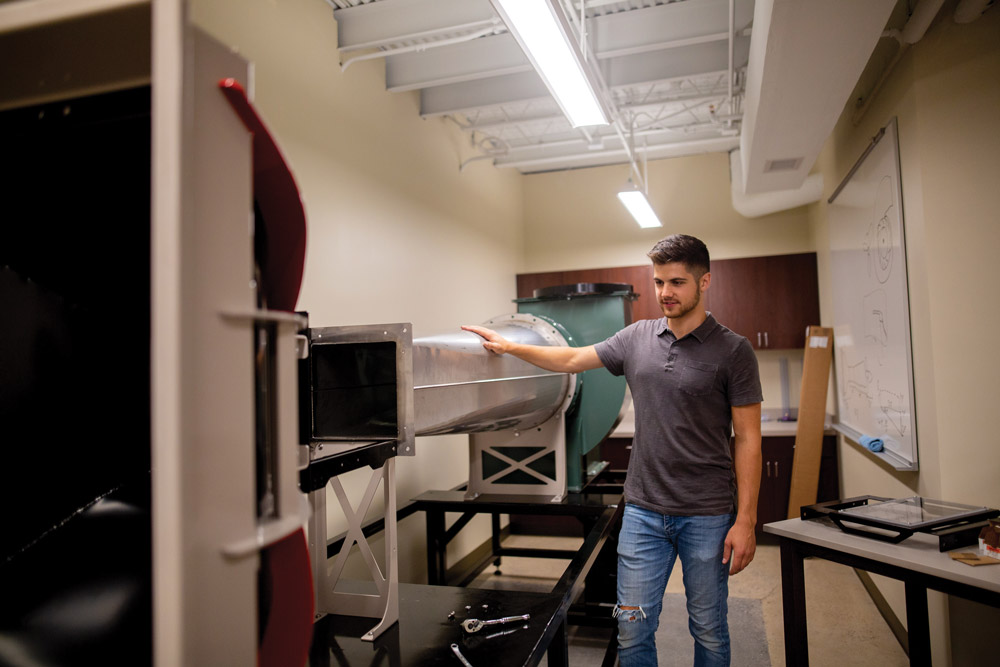
INSPIRED BY A VISIT to a NASA research facility three years ago, engineering student Dylan Grove ‘19 dedicated his senior engineering capstone project to building a wind tunnel for his alma mater.
Grove, from Dickerson, Maryland, began research for the tunnel in August 2018, and designed and constructed it during spring and summer 2019. The 14 feet-long structure includes a series of component systems – intake manifold, test chamber, diffuser, blower – that are precisely designed and mounted on a black metal frame to create 100 mile-per-hour winds.
The EMU engineering department uses the tunnel in its fluid mechanics class to model air flow and study lift, drag, and other forces on models such as an airplane with an eight-inch wingspan.
The project’s roots go back to 2016, when then-sophomore Grove and classmates in EMU’s new engineering program saw large-scale wind tunnels during a visit to NASA’s Langley Research Center in Hampton, Virginia.
EMU, Grove learned, was planning to buy a wind tunnel for its own use. “Why?” he recalls asking. “We can probably just build one. That sounds like a great senior project.”
In pursuing that goal, Grove was supported by Venture Products in Orrville, Ohio, where as an intern last summer he learned a lot that he put to hands-on use in this project.
The company donated sheet metal, some of which they cut and bent for creating the intake. Grove was proud and appreciative of the finished product, which he designed and made with help from Venture Product’s Roscoe Lehman: a complex work of engineering art whose “variable radius curve” required that they “build the fabrication process into the design,” he said.
He also found many collaborators right on campus. Professors Esther Tian and Stefano Colafranceschi advised him on the project, and engineering classmates helped with design plans; computer science students programmed the control system; mathematical sciences lab tech Buddy Wilkins processed ideas; and Facilities Management fleet and equipment coordinator Henry Bowser welded the frame.
“It’s not just out of my brain, that’s for sure,” Grove said.
Donated materials greatly reduced the cost of the potentially expensive project. In addition to Venture Products’ contributions, the New York Blower Company in Willowbrook, Illinois, donated the blower, and Glass and Metals in Harrisonburg donated the plexiglass.
Throughout, Grove maintained a healthy skepticism, on at least one occasion this summer looking at the various components spread across his workspace and commenting, “If it works, I’ll be really pleased.”
But then two parts would fit together really well, such as when the 450-pound blower was lowered by tractor onto the frame and the six holes for the anchor bolts aligned perfectly. “Oh! Wow!” he remembers thinking. “This is incredible!”
